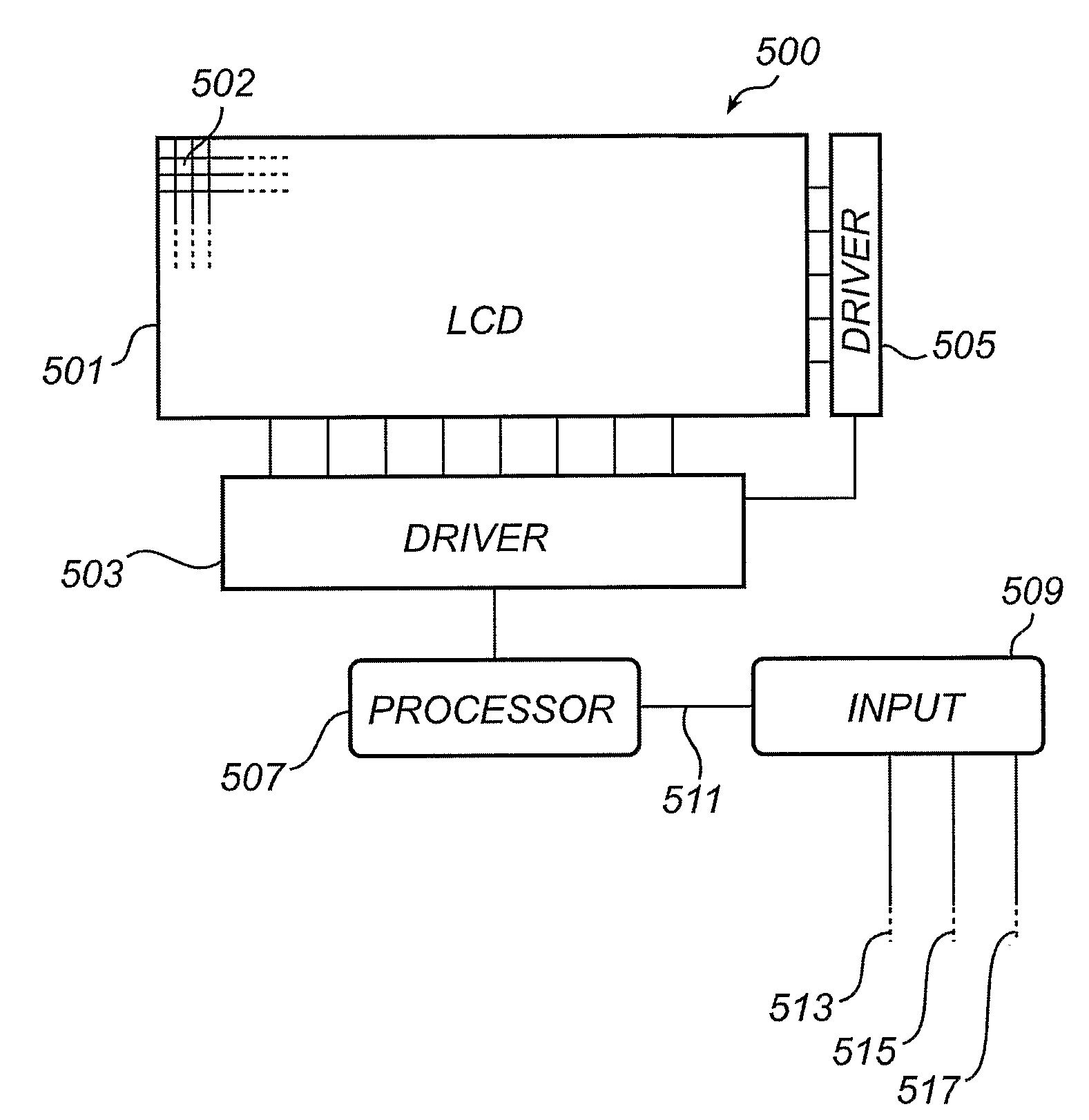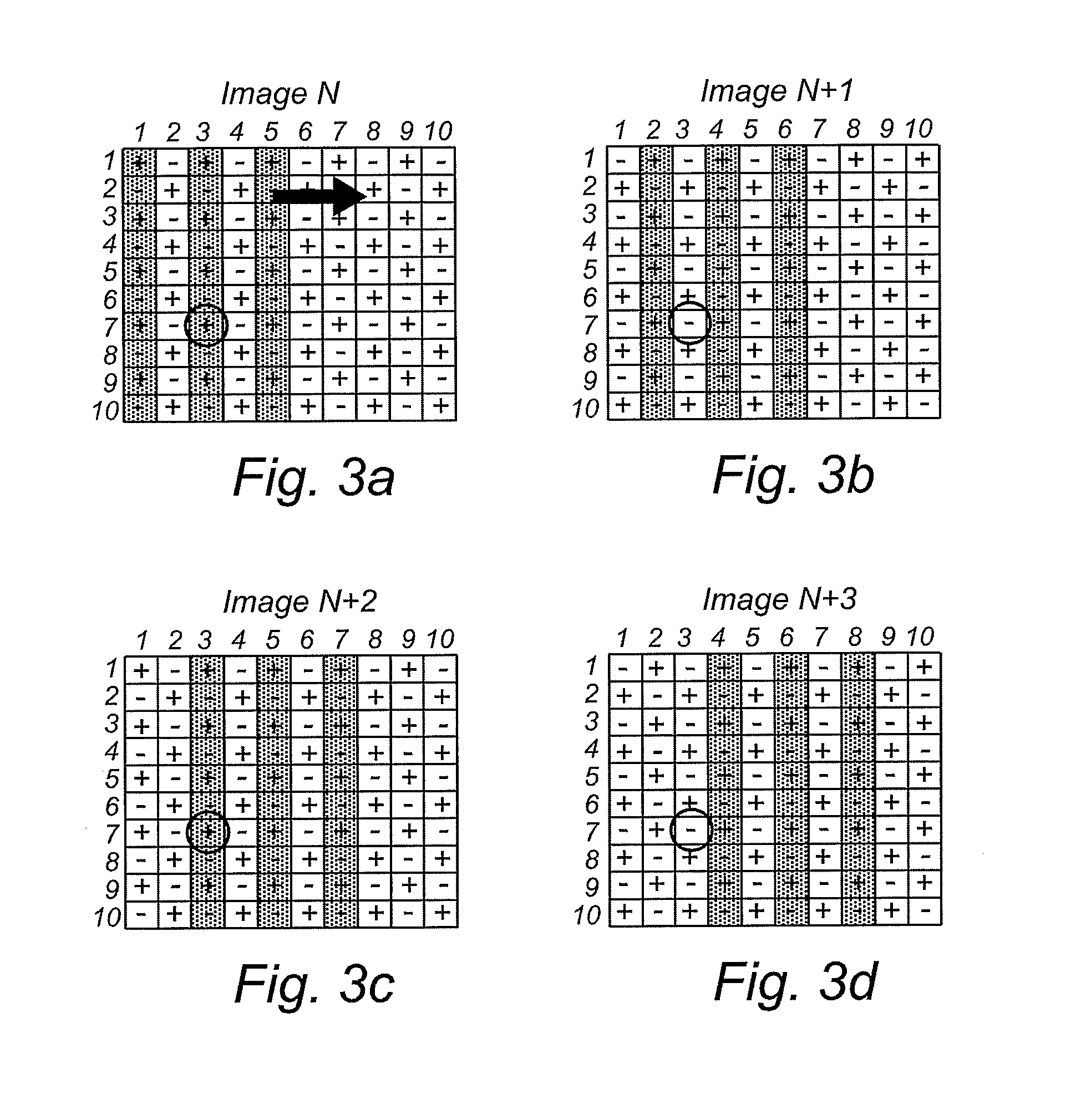Dispaly Pixel Inversion Scheme
a technology of inversion scheme and display device, applied in the field of display device, can solve the problems of biasing electric field across the cell, unsatisfactory biasing electric field, and problem of charge build-up, so as to improve the use of image data analysis results, and disable the second inversion scheme
- Summary
- Abstract
- Description
- Claims
- Application Information
AI Technical Summary
Benefits of technology
Problems solved by technology
Method used
Image
Examples
Embodiment Construction
[0031]In what follows, a number of image data frames will be schematically illustrated, comprising 100 picture cells (or pixels) arranged in 10 rows by 10 columns, as indicated by arrows 102, 104 in FIG. 1a. In the image data frames of FIGS. 1 to 4, the picture cells that contain a dotted pattern illustrate bright (as perceived by a viewer) pixels and white cells represent dark pixels. A plus (+) sign represents a positive driving level, i.e. the sum of a common voltage level and a voltage level representing the data of the pixel in the image data signal. A minus (−) sign represents a negative driving level, i.e. the difference between a common voltage level and a voltage level representing the data of the pixel in the image data signal.
[0032]An LCD picture cell changes its transmission depending on the strength of the electric field over the cell, i.e. irrespective of the polarity of the field. A known problem related to LCD's is that a long-term voltage bias results in the cell dr...
PUM
 Login to View More
Login to View More Abstract
Description
Claims
Application Information
 Login to View More
Login to View More - R&D
- Intellectual Property
- Life Sciences
- Materials
- Tech Scout
- Unparalleled Data Quality
- Higher Quality Content
- 60% Fewer Hallucinations
Browse by: Latest US Patents, China's latest patents, Technical Efficacy Thesaurus, Application Domain, Technology Topic, Popular Technical Reports.
© 2025 PatSnap. All rights reserved.Legal|Privacy policy|Modern Slavery Act Transparency Statement|Sitemap|About US| Contact US: help@patsnap.com



